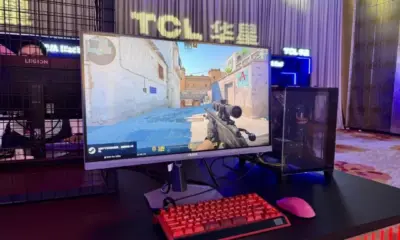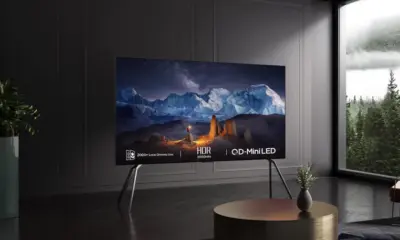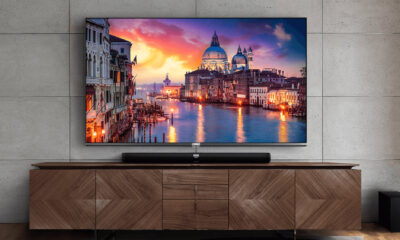News
This $4 Billion OLED Factory Could Change How Your Next Screen Is Made
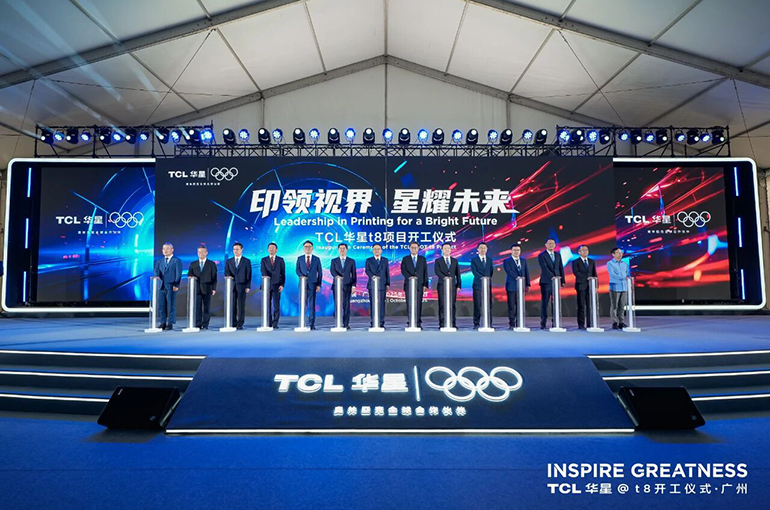
TCL CSOT has officially started construction of its T8 project in Guangzhou. The project marks the world’s first large-scale mass-production G8.6 printed OLED line. It is backed by a ¥29.5 billion ($4.13 billion) investment from TCL CSOT, the Guangzhou Municipal Government, and the Guangzhou Economic and Technological Development Zone Administration.
According to TCL Technology Senior Vice President and CSOT CEO Zhao Jun, the T8 project positions Chinese display manufacturers to lead the high-generation AMOLED segment. The project aims to move the industry beyond traditional LCD and evaporation-based OLED manufacturing by adopting printed OLED technology on a larger scale. This advancement allows for higher material utilization and lower production costs.
TCL CSOT plans to process approximately 22,500 glass substrates per month. The line will use 2290 × 2620 mm G8.6 glass, which is better suited for producing larger panels. Initial applications will focus on mid-to-high-end monitors, tablets, and laptops. TCL CSOT also plans to expand printed OLED applications to other premium display categories once production stabilizes.

The T8 factory will incorporate automation, industrial robotics, AI large model algorithms, and new energy applications. TCL CSOT expects these technologies to improve operational efficiency and support the development of a next-generation display manufacturing ecosystem.
Cao Weiran, Director of TCL CSOT’s Printed OLED Center, said the company gained valuable experience from the T12 pilot line in Wuhan. That G5.5 line achieved mass production and product delivery in November 2024. Lessons learned from the T12 line will help accelerate the deployment and optimization of the T8 project.
TCL CSOT has already secured cooperation from multiple global suppliers of materials and equipment. These partnerships will support the full build-out of a printed OLED industrial chain that includes upstream materials, panel production, and downstream device integration.
In related news, TCL has completed the full acquisition of LG Display’s China operations. Meanwhile, China’s TV market continues to decline, with Q3 shipments down 10.4% and deeper cuts expected in Q4.
(Via)
News
TCL CSOT Powers AOC AGON’s 1000Hz Gaming Monitor AGP277QK
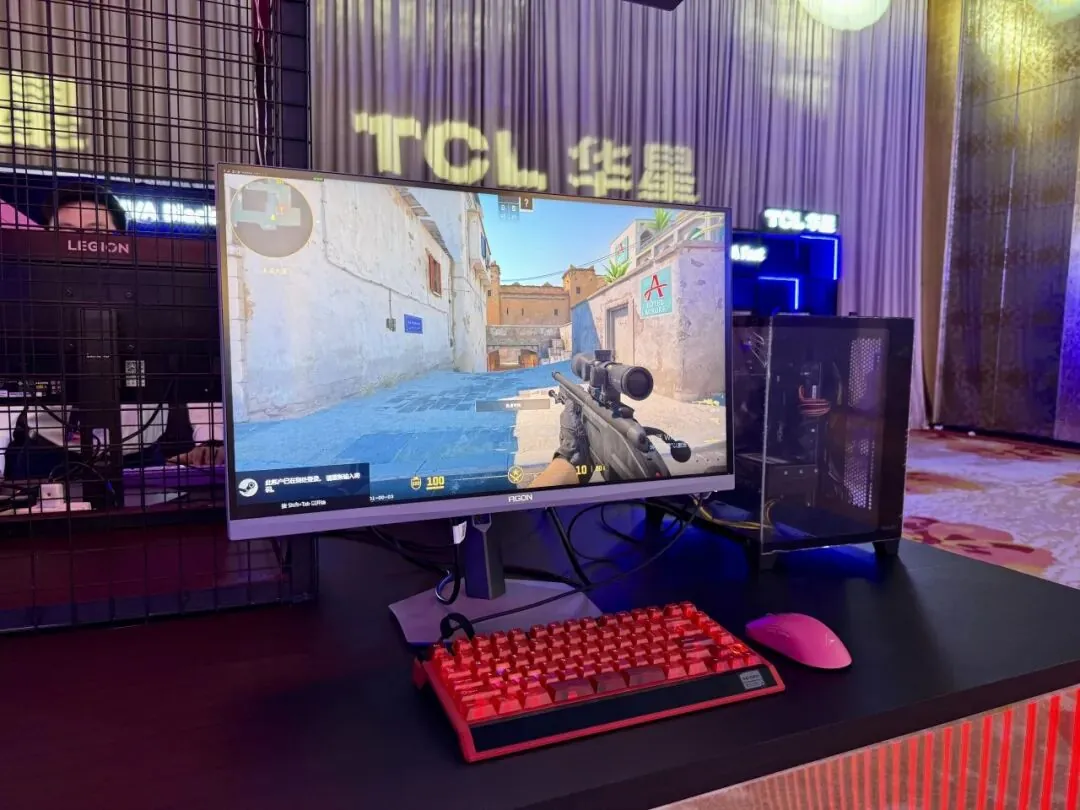
TCL CSOT is emerging as a driving force behind the next evolution in gaming displays. Following Philips’ announcement of the world’s first 1000Hz monitor, the EVNIA 27M2N5500XD, TPV’s other major brand, AOC AGON, has now unveiled the AGP277QK, another ultra-high-speed gaming monitor built on TCL’s latest panel innovations.
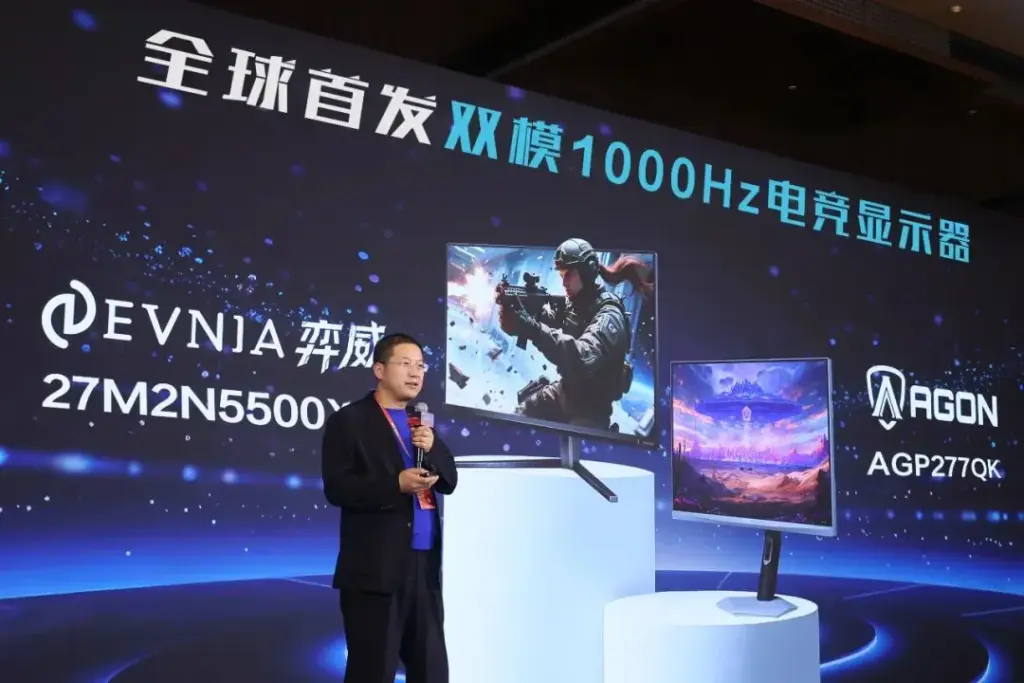
The AGP277QK made its debut at the “Esports Market Empowerment and High Resolution Gaming Display Trends Seminar” hosted by TCL CSOT in Beijing on December 4. The monitor supports two native refresh modes: 500Hz at QHD and 1000Hz at HD resolution. Both displays are powered by TCL’s advanced HFS Shoot technology, signaling TCL CSOT’s leading role in pushing refresh rates into four-digit territory.
TCL’s HFS Shoot panel enables extreme motion clarity with a 0.3ms MPRT and 0.5ms GtG response time. It also delivers a 2000:1 static contrast ratio, 10-bit color depth, and ΔE < 1 color accuracy. The panel covers 95% of the DCI-P3 color gamut and includes certified low blue light and flicker-free eye protection, features increasingly demanded by esports professionals and competitive gamers.
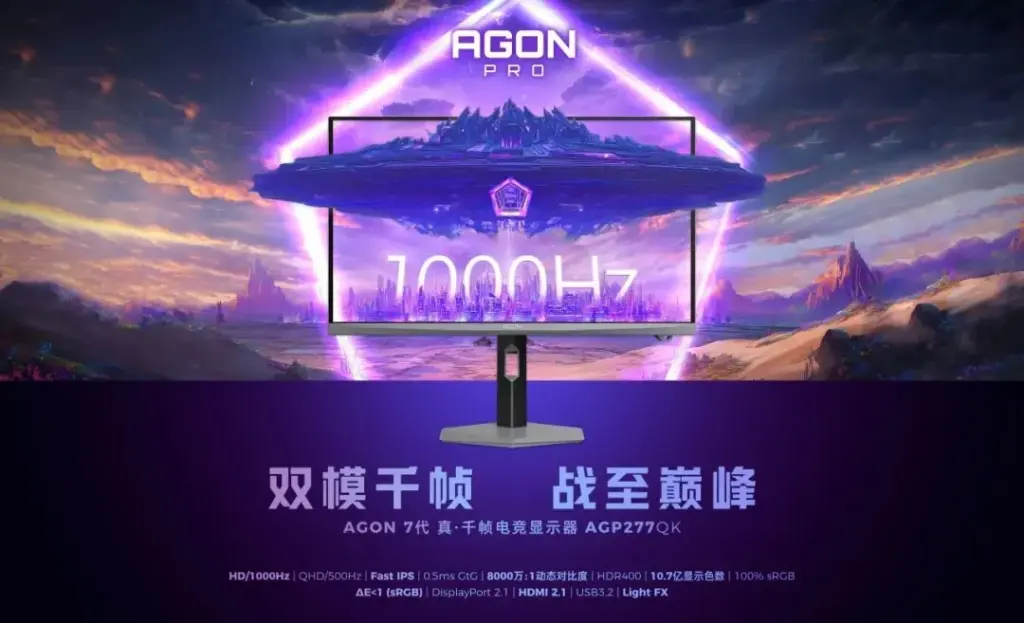
The AGON AGP277QK comes with modern connectivity options, including DisplayPort 2.1, HDMI 2.1, and USB 3.2 ports. It also features RGB Light FX that syncs with audio playback, aligning with gaming setups that value both performance and style.
TCL’s deep integration with TPV brands highlights its growing impact across the gaming display ecosystem. By enabling both Philips and AOC to deliver cutting-edge 1000Hz monitors, TCL CSOT is not only pushing panel technology forward but also setting new benchmarks in high refresh rate gaming.
In related news, China’s TV market recorded a 15.7% drop in November shipments despite the extended Double 11 campaign, and Hisense launched a 4K 160Hz dual mode monitor that also functions as a Dolby Vision TV.
(Via)
News
China’s TV Market Sees 15.7% Decline in November Shipments Despite Double 11
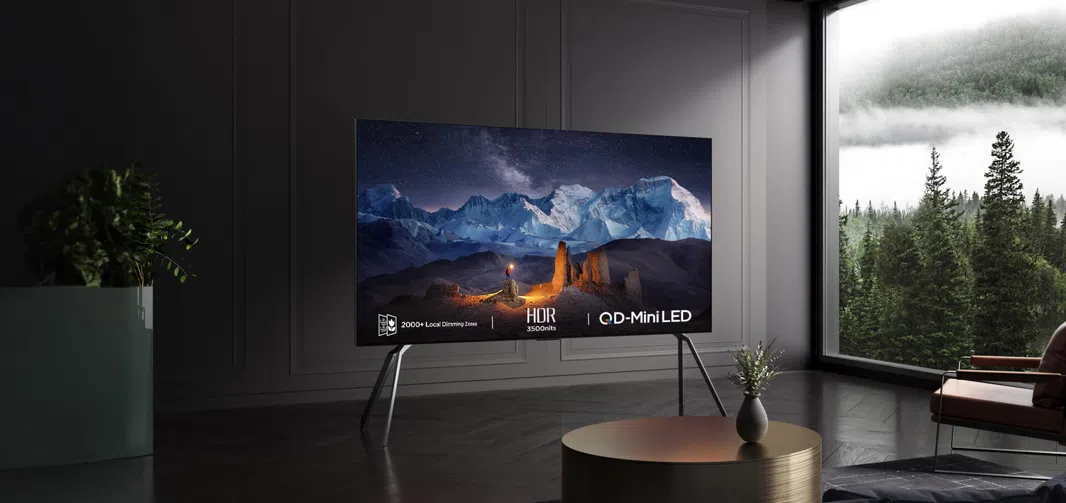
New shipment data from RUNTO Technology shows that China’s TV market continued to decline in November 2025, with most major brands reporting lower shipment volumes. Total shipments reached approximately 3.22 million units, a slight drop from the previous month and a steep 15.7% fall compared to November 2024.
The decline reflects ongoing challenges in the market. Government subsidies have gradually tapered off, and earlier pent-up demand appears to be exhausted. Since mid-year, the market has posted monthly declines of around 10%, showing consistent weakness despite major sales events.
November featured the country’s longest-running Double 11 sales campaign, but promotions failed to revive demand. Retail sales volume dropped 19.6% year-on-year, while retail revenue fell by 22.1%. The figures suggest that aggressive discounting is no longer enough to offset broader consumer caution.
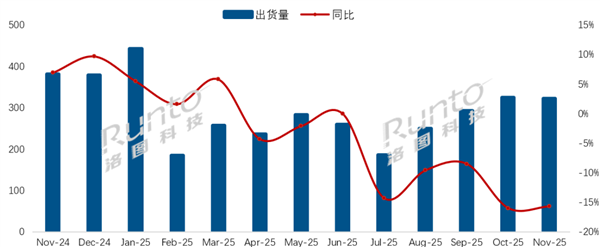
Despite the downturn, TCL remained one of the strongest players in the market. Alongside Hisense and Skyworth, TCL helped lead a group that shipped a combined 1.98 million units. The trio’s combined market share reached 61.6%, and their year-on-year decline was limited to 11.2%, lower than the overall market drop. TCL continues to strengthen its lineup with Mini LED and QLED models, contributing to its stable performance.
Xiaomi, including its Redmi TV brand, ranked third with 530,000 units shipped and a 16.5% share. Brands like Changhong, Haier, and Konka followed, but recorded a combined shipment drop of 13.8%. Huawei, Samsung, and Sony reported shipments in the tens of thousands, maintaining a limited presence in the domestic market.
RUNTO Technology estimates that full-year shipments in 2025 may fall to around 33 million units. The firm expects further contraction in 2026 as market saturation and weakened buying sentiment continue to pressure sales.
In related news, we recently covered Hisense as it launched a 4K 160Hz dual-mode monitor that doubles as a Dolby Vision TV, and also covered a roundup of the best TCL TVs under $500 you can buy in 2025.
(Via)
News
Hisense launches a 4K 160Hz dual mode monitor that’s also a Dolby Vision TV in disguise

The arch rival of TCL, Hisense has launched the 27GX Mini LED monitor in China, priced at 4399 yuan ($622). It features a 27-inch Fast IPS panel with support for dual refresh rate modes: 4K at 160Hz and Full HD at 320Hz. The monitor targets both gamers and content consumers with its high brightness, wide color coverage, and versatile design.
Hisense 27GX Specifications
The monitor features a peak brightness of 2000 nits and meets VESA DisplayHDR 1400 certification. It comes with U+ Mini LED backlighting, supported by 2304 local dimming zones and per-pixel control through an AM driver system.
It equips a dual-layer nano-grade LR low reflection film that reduces reflectivity to just 1.8%, while improving perceived black levels by 33%.
The 27GX is powered by the same MediaTek 9655 processor found in Hisense’s flagship TVs. It pairs this chip with 4GB RAM and 64GB storage, allowing smart features to run smoothly and enabling advanced image processing.
The monitor covers 99% of the sRGB color space, 98% of DCI-P3, 100% of Adobe RGB, and 85% of BT.2020, with Delta E less than 1 for professional-grade color accuracy. It supports 10-bit color depth (8+FRC) and maintains 178-degree wide viewing angles using Hisense’s STW wide-angle compensation layer.
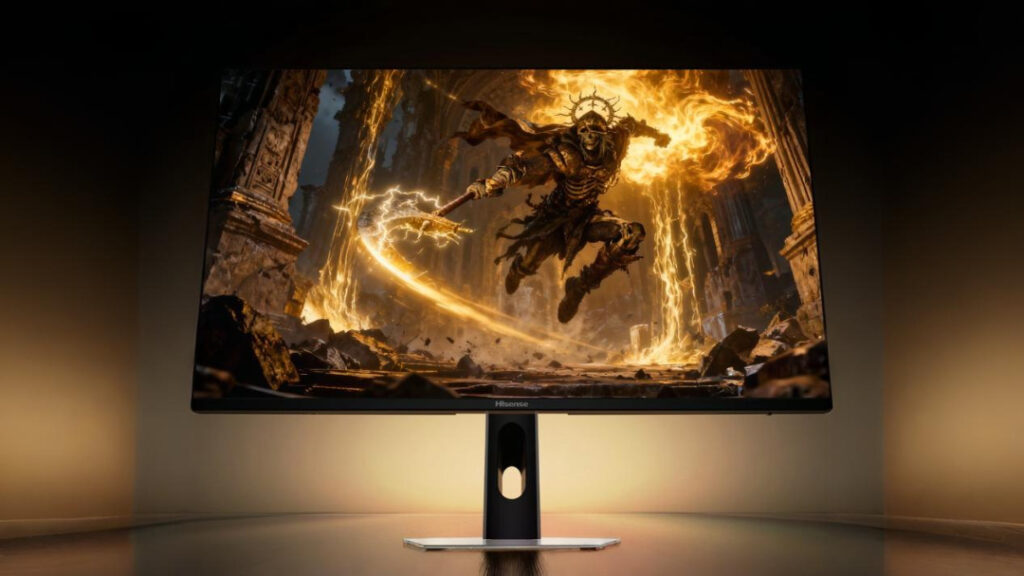
It also supports FreeSync Premium Pro, MEMC motion compensation, black frame insertion (BFI), and AI-based image enhancement features, including AI Super Resolution and AI PQ tuning.
It comes with a full smart TV OS, built-in voice control, and streaming capabilities. It includes four viewing modes: Standard, Kids, Senior, and Education. It sports dual 5W stereo speakers tuned by Hisense Golden Ear and supports Dolby Vision IQ and Dolby Atmos.
The monitor supports KVM switching and features an ambient light sensor for automatic brightness adjustment. It includes two HDMI 2.1 ports, one DP 1.4 port, a Type-C port with 90W charging, USB-A and USB-B ports, and a 3.5mm headphone jack.
It comes in a Glacier White design with tilt, pivot, swivel, and height adjustments, along with a VESA 75×75 mm mount and compact GaN power adapter.
In related news, we recently covered the best TCL TVs under $500 you can buy in 2025, along with a breakdown of why the 2026 FIFA World Cup is expected to trigger a major rebound in the global TV market.

